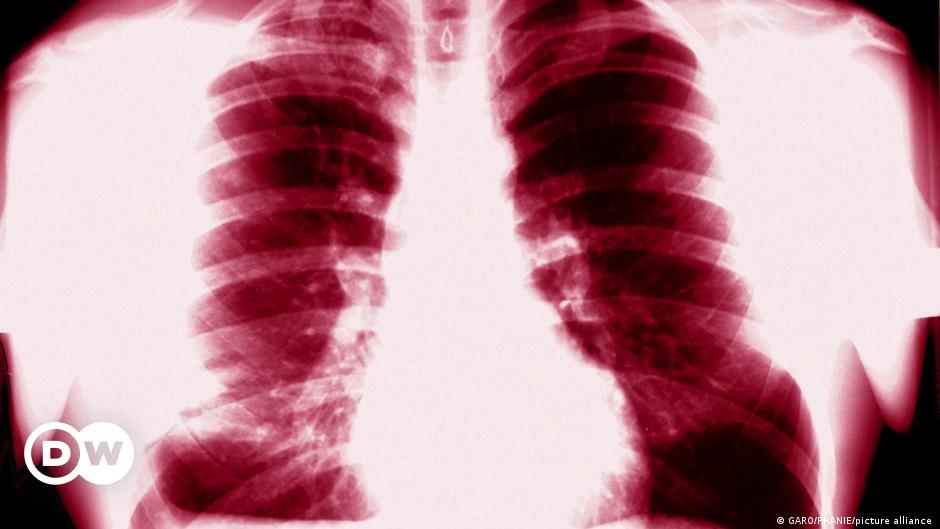Infection
Tuberculosis: first time infections rise to 30 year high
An estimated 10.6 million people developed tuberculosis (TB) in 2022. A majority of those — 7.5 million people — were diagnosed with the airborne lung disease for the first time. This is significant because once you’ve had TB, you are more likely to get it again.
The World Health Organization said this was the highest annual record of new cases of TB since it started monitoring the disease in 1995.
In its Global Tuberculosis Report 2023, the WHO said the sharp rise may be linked to delays in treatment caused by the COVID-19 pandemic.
“Health seeking” — as it’s called — was very poor for all diseases other than COVID during pandemic, said Dr Ramya Ananthakrishnan, director of REACH, a non profit organization in India.
Due to isolation and quarantine measures during the pandemic, many people failed to get tested for TB, said Ananthakrishnan: “A large number of people who had extra pulmonary TB (Ed.: extra pulmonary TB is when it infects an area outside of the lungs) also didn’t seek healthcare during that period.”
What is tuberculosis?
Tuberculosis is a contagious disease caused by the bacteria, Mycobacterium tuberculosis.
The bacteria is airborne and spreads when an infected person coughs openly and another person comes into contact with droplets produced by the cough.
It typically affects the lungs, but can affect other parts of the body as well. Data suggests that more men than women are affected by TB.
What causes tuberculosis?
It’s estimated that a quarter of all people in the world are infected by the bacteria, Mycobacterium tuberculosis. But it can lie dormant — or inactive — in the body for years.
Only five percent of people who are infected go on to develop the disease in the two years after their original infection with the bacteria.
An infection often breaks out when a person’s immune system is weakened for some other reason.
“One of the top reasons for immunity going down is malnutrition,” said Ananthakrishnan. “HIV creates a big risk [and] diabetes is an important threat to immunity.”
The WHO identifies alcohol abuse and smoking as additional risk factors.
If a person has an active infection but does not receive treatment, their risk of death is high.
Which countries have the highest number of TB cases?
In 2022, just eight countries in Africa, South Asia and Southeast Asia recorded more than two-thirds of all the new TB cases worldwide: India, Indonesia, China, the Philippines, Pakistan, Nigeria, Bangladesh and the Democratic Republic of Congo.
However, India, Indonesia and the Philippines also hold a majority (60%) of the global case reductions.
India recorded 27% of the world’s TB cases in 2022. The country’s Health Ministry said November 8, 2023, that the country had reduced the incidence of TB by 16% and had seen 18% fewer TB deaths since 2015.
The health ministry attributed the record numbers of new TB cases in India to intensified case detection and screening strategies.
Lucica Ditiu, executive director at The Stop TB Partnership, a grouping of government, non-government organizations and community programs, said the report “tells a typical underdog story.”
In spite of fighting the pandemic and low financial resources, many TB health care providers continued to diagnose and treat those 7.5 million first time cases, said Ditiu.
How many people die from tuberculosis every year?
In 2022, an estimated 1.3 million deaths globally were associated with TB.
This was down from estimates of 1.4 million TB deaths in both 2020 and 2021, and almost back to pre-pandemic levels recorded in 2019.
But in its annual report, the WHO said that “TB remained the world’s second leading cause of death from a single infectious agent, after COVID-19,” and that it had caused almost twice as many deaths as HIV/AIDS.
Tuberculosis is a leading cause of death among people living with HIV, who are about 18 times more likely to develop the lung disease.
How do you prevent deaths from tuberculosis?
With proper treatment, 85% of people recover from the TB, so early diagnosis is key to reducing deaths.
There is also a vaccine against TB, known as BCG (bacille Calmette-Guerin).
The BCG jab is usually given to children and has been used for about a century. It is mostly effective for children under the age of five, but less so in older people and even less effective in people with pre-existing medical conditions, such as HIV/AIDS or diabetes.
“BCG vaccine largely protects against severe forms of TB disease in adults. It is not very effective against lung TB in adults,” said Ananthakrishnan.
New vaccines are in development, but they have yet to be implemented at the community level.
If an infection is active, patients can take therapeutic medicine, such as the drug isoniazid. The WHO recommends that people who have contact with TB patients should also take medicines to prevent their own infection.
But “adherence to this preventive care was very low,” said the WHO, “as people had to take it for a very prolonged period” — the drug has to be taken daily for 6-9 months.
Other preventative drugs, such as the antibiotic rifampicin, have been implemented more successfully, said Ananthakrishnan. It is taken it once a week.
Edited by: Zulfikar Abbany

